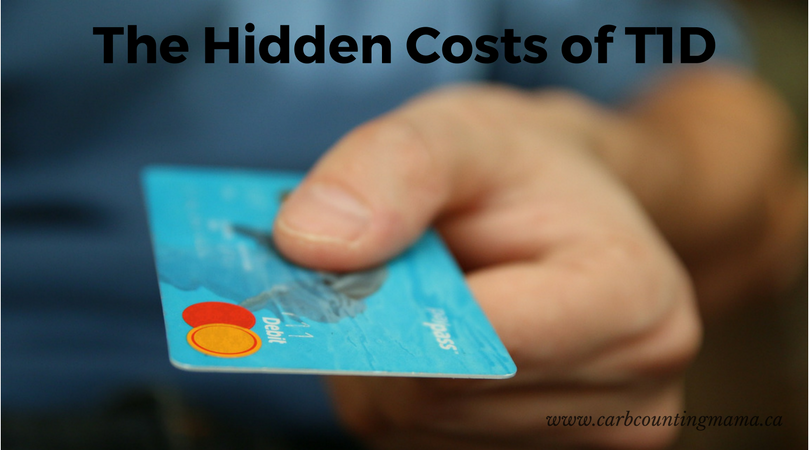We recently had a Provincial election here in British Columbia. Here, insulin pumps are covered up to age 25. Prior to the election, at the all-candidates meeting on disability and accessibility, someone brought up the topic of removing the age cap on insulin pump coverage. One of the candidates responded by saying that their party is more focused on prevention of diseases like diabetes. Palm… meet face.
At this point, some of you are… um… a bit irritated, to say the least. Others are saying to themselves, “What’s wrong with wanting to prevent diabetes?”
For people in the latter category, I will be brief.
Type 1 diabetes is not preventable. It’s an autoimmune disease. The immune system mistakenly attacks insulin-producing cells in the pancreas, killing them off. No one knows what causes the attack, and there is no cure.
Without insulin, you die.
So… people with type 1 diabetes need to inject their insulin, either with pens, syringes, or via an insulin pump.
Which brings us back to insulin pumps
These life-saving devices are not cheap. The pump itself costs several thousand dollars. On top of that one-time purchase, there are things like sites, pods, and reservoirs that are required to actually get the insulin from the pump into your body. These things need to be changed at regular intervals (generally every 3 days), so there is an added monthly cost to using an insulin pump.
It’s not much different to be on MDI (multiple daily injections). There is a monthly cost to that method as well. Needle tips and syringes need to be purchased frequently.
All this doesn’t even factor in the insulin that is needed. Where I live, insulin is not very expensive, but in the US, it can cost upwards of $1200 a month just for the insulin. And that can be WITH insurance!
The monetary cost of living with diabetes is extreme. And the cost keeps rising.
But to get proper, affordable diabetes care, the cost goes much deeper than dollars and cents.
We have our work cut out for us
Get rid of the misconceptions
Before we can get help of any kind, we need to smash the misconceptions that the public has about diabetes.
Five years ago, before my son was diagnosed with T1D, I was one of the people who thought diabetes was a disease for overweight, lazy people. Most people who haven’t dealt with the disease before have a similar notion.
Whether it’s the cashier at the local food court, the news anchor on a national TV station, or the politician making the decisions, in order for people to care about diabetes treatment and finding a cure, they have to empathize.
The hypothetical diabetic person in most people’s minds is not one that they empathize with. So, especially when people express their misconceptions about diabetes, we need to take the opportunity to correct and educate on what diabetes is really like.
Reinvent the public perception of diabetes
We have to get rid of the misconceptions, but we also have to replace those misconceptions with facts.
One of the most common reasons people don’t care about diabetes is because “diabetes is no big deal.”
People see diabetes as a simple, manageable disease that is easy to get under control. They don’t know that it’s life-threatening, even with “good” control, and one slip up could mean a seizure, coma, or worse.
We need to teach people that diabetes is a very serious disease that cannot be ignored.
We need to teach them that diabetes doesn’t discriminate. People are diagnosed as infants, seniors, and anything in between. Diabetes doesn’t care what race you are, how much money you make, your religious views, or your fitness level.
Time to explain what we need
Once the misconceptions are dissolved, and the severity of the disease is known, it’s much easier to explain what we need and why we need it.
Many politicians and other government officials, the ones making the decisions, are the ones who don’t know the first thing about diabetes. They don’t know the difference between type 1 and type 2, let alone what an insulin pump or CGM does.
When your government is making a decision about healthcare that could affect people with T1D, please don’t “wait and see” what will happen. Don’t have blind faith that they will make the right decision.
Always contact your representatives to explain what you need and why you need it. Educate, so that they can make an informed decision.
We’re starting at the bottom
The cost T1D inflicts on your bank account can be paralyzing.
Having to fight upstream for everything you need to survive, costs so much more in time and energy.
It takes patience and grace to teach others. It takes hearing the same things over and over, wearing you down.
Telling that stranger that “Yes, my son can eat that” or “No, I didn’t feed her too much candy”, it gets exhausting.
But people do listen. They do learn. Even if you never realize it, parents get their children checked for T1D because of diabetes awareness posts. Children get diagnosed before they’re in DKA because someone was educating.
And as much as those parents will pay in time, energy, sleep loss, worry, and yes, even money, they will be forever grateful that diabetes didn’t cost them their child’s life.
Even if it’s one person at a time, please keep educating
~ Leah

Leave a Reply